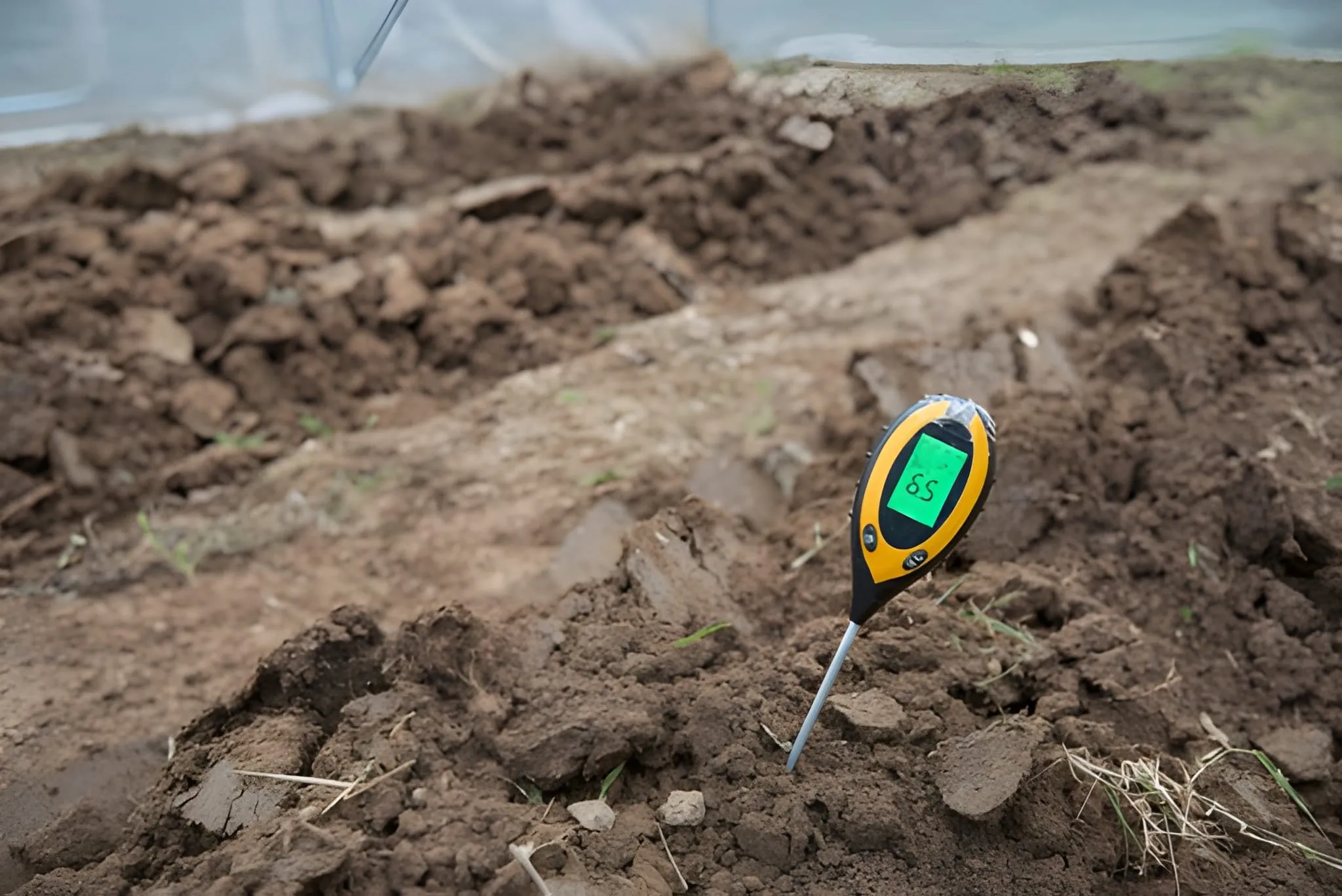Understanding your soil is the first step to growing healthy plants and improving crop yields. This guide explains essential tools and methods to test and maintain soil health effectively.
Healthy soil is vital for strong plant growth and sustainable farming. However, many gardeners and farmers overlook the importance of regularly testing soil to understand its condition. This beginner’s guide introduces basic tools and techniques to help you measure soil quality, including soil testing kits, dirt testing kits, soil acidity testers, and soil and pH testers. Using these tools can help you make informed decisions about fertilization, watering, and crop selection.
Why Test Soil Health?
Soil testing kit is crucial because soil conditions vary widely by location and can change over time. Without testing, you may not know if your soil has the right nutrients or if its pH level suits the plants you want to grow. Soil tests reveal important factors such as nutrient content, soil texture, moisture level, and acidity. This information helps avoid overuse of fertilizers and ensures plants receive the right nutrients for optimal growth.
Essential Tools for Soil Testing
There are many tools available to test soil, but beginners should focus on easy-to-use kits that provide clear results. Here are some key soil testing tools:
- Soil Testing Kit: These kits usually contain all necessary materials to collect soil samples and test for nutrients like nitrogen, phosphorus, and potassium. They often include color charts to compare results and understand nutrient levels.
- Dirt Testing Kit: Similar to soil testing kits, dirt testing kits focus on general soil health and composition. They can test for texture, moisture, and organic matter content. These kits are useful for gardeners wanting a broad overview of their soil’s condition.
- Soil Acidity Tester: Soil pH plays a big role in nutrient availability. A soil acidity tester measures how acidic or alkaline your soil is. Some plants prefer acidic soil, while others need neutral or alkaline conditions. Testing pH ensures your soil supports the plants you want to grow.
- Soil and pH Tester: This combines nutrient testing with pH measurement. It is an all-in-one tool suitable for gardeners and farmers who want quick, reliable results on both nutrient levels and acidity.
How to Use Soil Testing Kits
Using a soil testing kit or a dirt testing kit is simple and requires just a few steps:
- Collect Soil Samples: Take samples from different areas of your garden or field to get an accurate picture. Dig 4-6 inches deep, as this is the root zone where most nutrient absorption happens.
- Mix the Samples: Combine the collected soil in a clean container to create a representative sample.
- Prepare the Sample for Testing: Follow the instructions in your kit, which may include drying the soil, removing debris, or mixing it with water or chemicals.
- Test the Soil: Use the provided reagents or strips to test nutrient levels, pH, and other properties. Compare the results with the kit’s color chart or digital readout.
- Interpret the Results: Understand the nutrient levels and pH to decide if you need to add fertilizers or soil amendments.
Techniques for Accurate Soil Testing
To get reliable results, consider these tips:
- Test soil during the growing season, ideally before planting or fertilizing.
- Avoid collecting soil when it’s too wet or too dry.
- Use clean tools to prevent contamination.
- Test regularly, at least once a year, to monitor changes.
Benefits of Using a Soil Acidity Tester
Knowing soil pH helps you choose the right plants and amendments. A soil acidity tester allows you to measure pH quickly and accurately. Adjusting soil pH by adding lime or sulfur improves nutrient availability. Many plants struggle in soils with improper pH, so regular testing is essential for healthy growth.
What Makes a Good Soil and pH Tester?
A quality soil and pH tester should be easy to use, provide fast results, and be durable for outdoor use. Digital testers with probes are popular because they give precise readings. Some kits also test moisture, temperature, and nutrient levels, offering a comprehensive soil analysis in one tool.
Taking Care of Your Soil for Long-Term Health
Testing soil is just the first step. Based on the test results, you can take measures to improve soil health:
- Add organic matter such as compost or manure to enhance soil structure.
- Adjust pH by applying lime to raise it or sulfur to lower it.
- Use fertilizers according to nutrient deficiencies shown by tests.
- Rotate crops to maintain nutrient balance and reduce pests.
- Avoid overwatering to prevent nutrient leaching and soil compaction.
Where to Find Reliable Soil Testing Kits
When selecting a soil testing kit, make sure it matches your needs. Kits vary in complexity, price, and accuracy. For thorough and professional soil analysis, consider lab testing or kits available from trusted suppliers. One recommended source is Lab Chemicals, which offers high-quality soil test kits suitable for farmers, gardeners, and researchers.
Final Thoughts
Maintaining healthy soil requires regular testing and the right tools. A soil testing kit, dirt testing kit, soil acidity tester, or soil and pH tester provides essential information about nutrient levels and pH, guiding you to better soil management. Accurate soil testing supports healthier plants, higher yields, and sustainable gardening or farming. For dependable and comprehensive soil test kits, explore the selection offered by Lab Chemicals. Lab Chemicals offers precise, user-friendly soil testing kits that take the guesswork out of soil care. With trusted accuracy and easy-to-follow instructions, our kits empower you to understand your soil’s needs deeply. Whether for home gardens or professional farms, Lab Chemicals ensures you get reliable results every time.
Power your plants with Lab Chemicals’ precision soil test kits and watch your garden thrive like never before!
